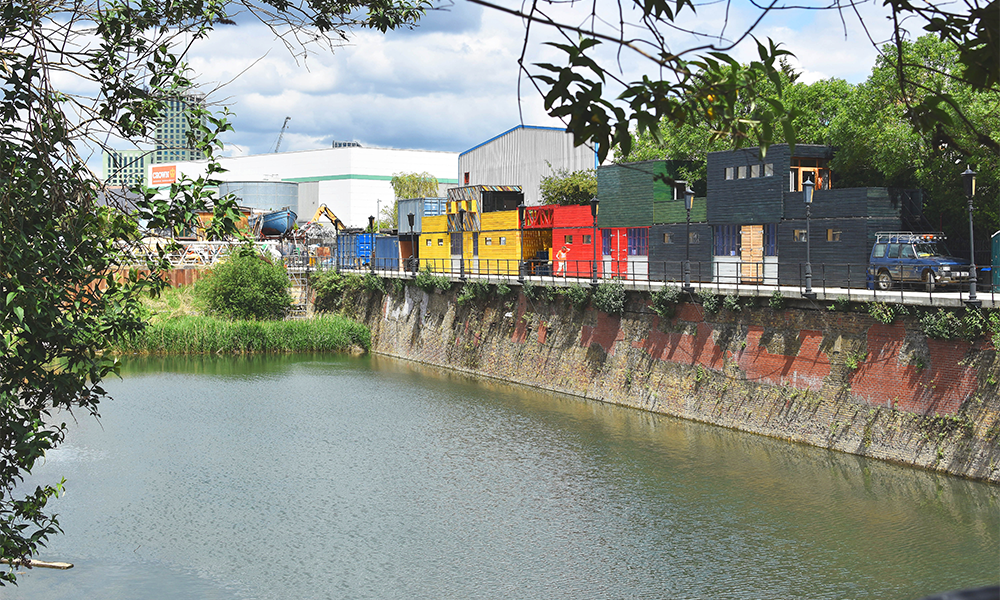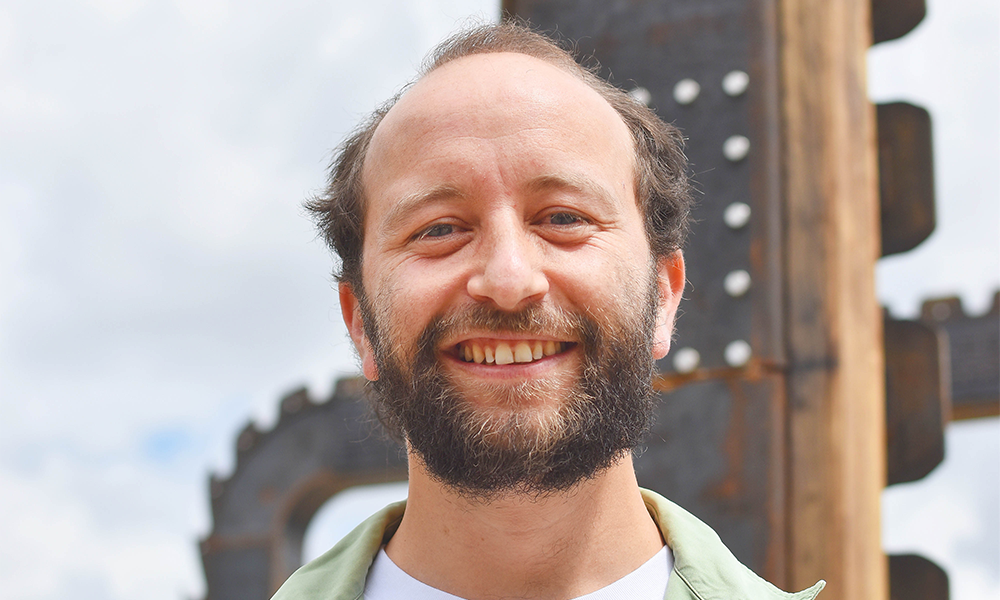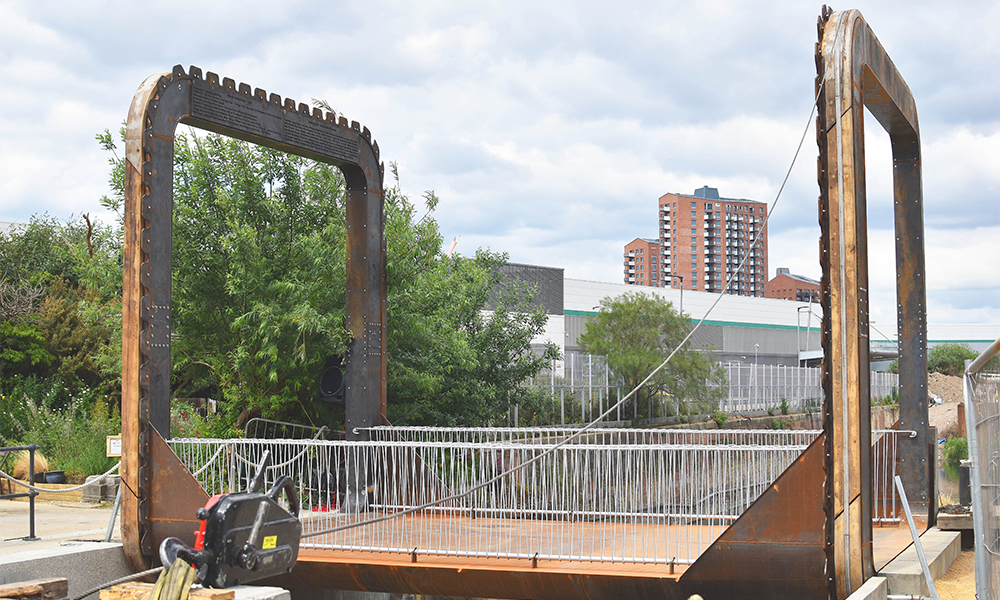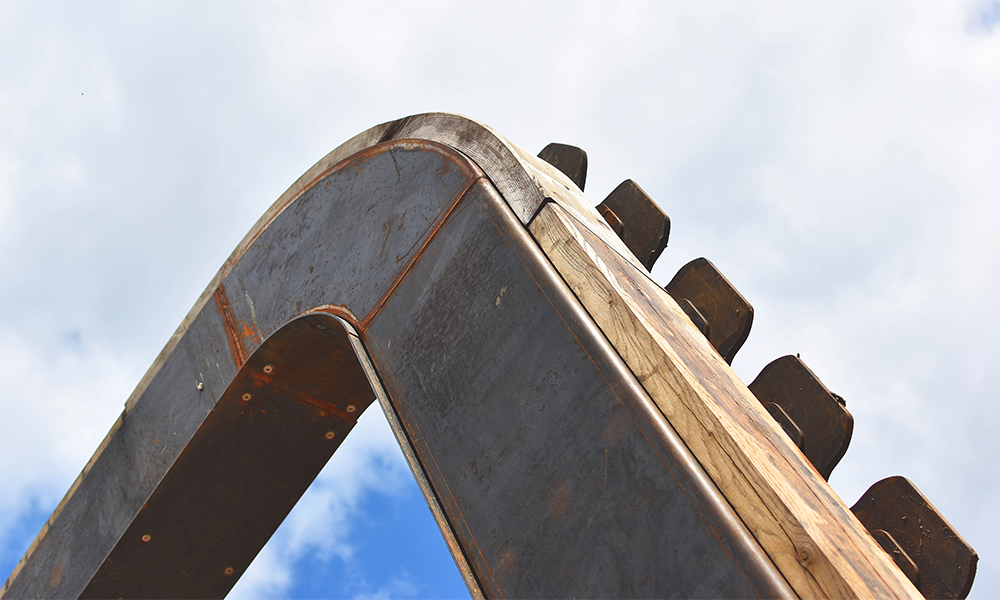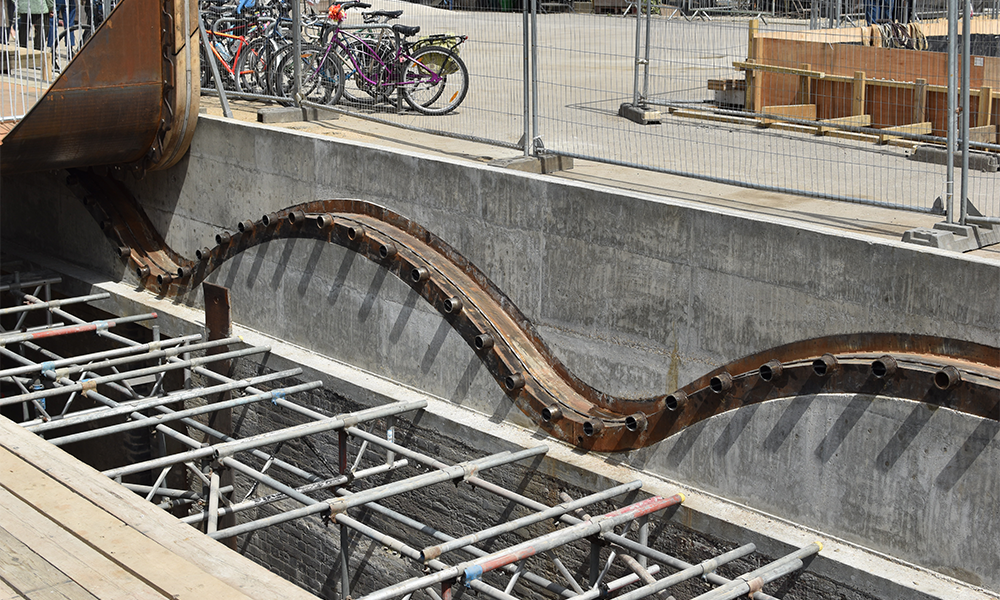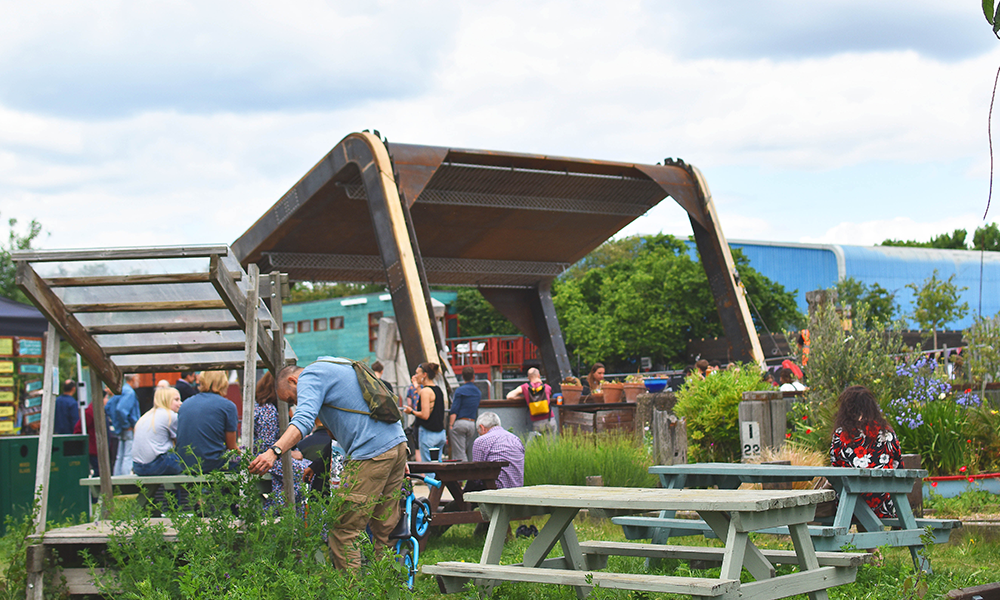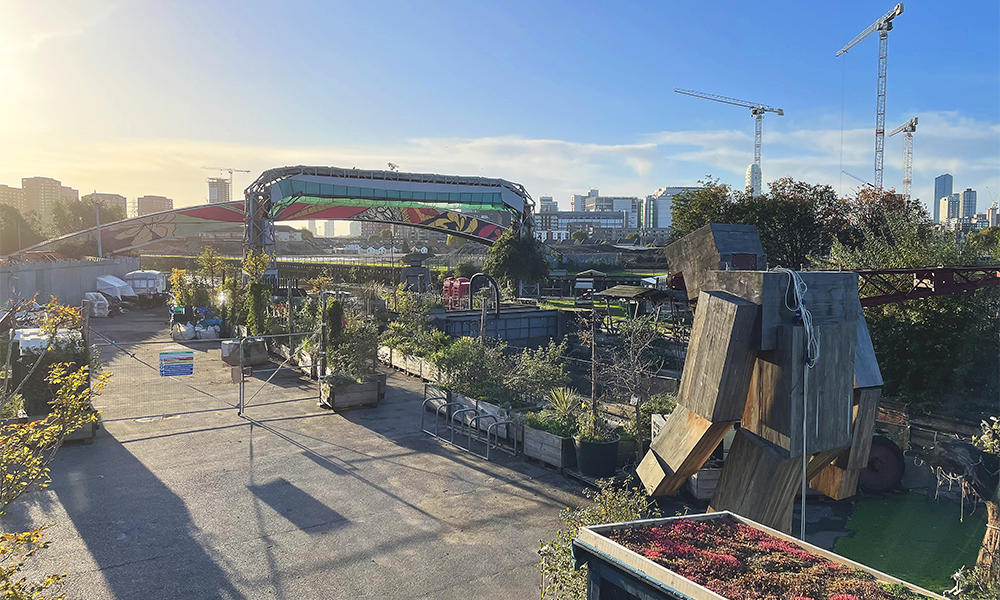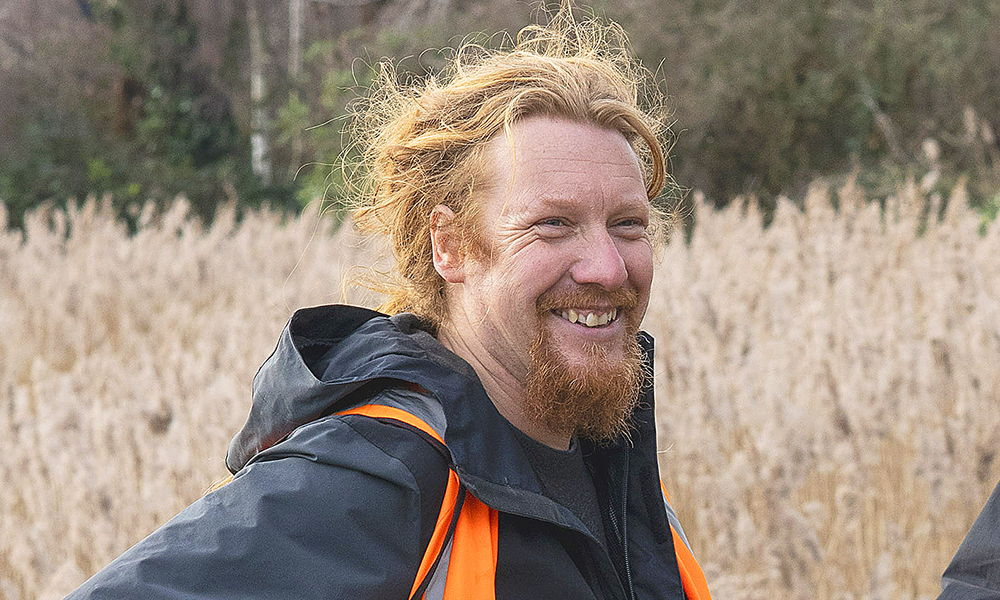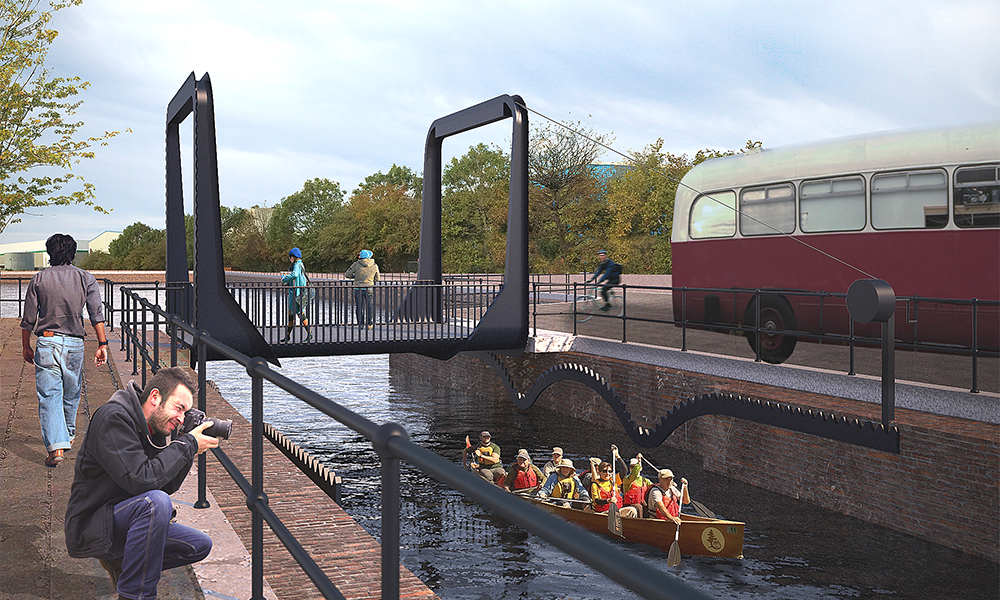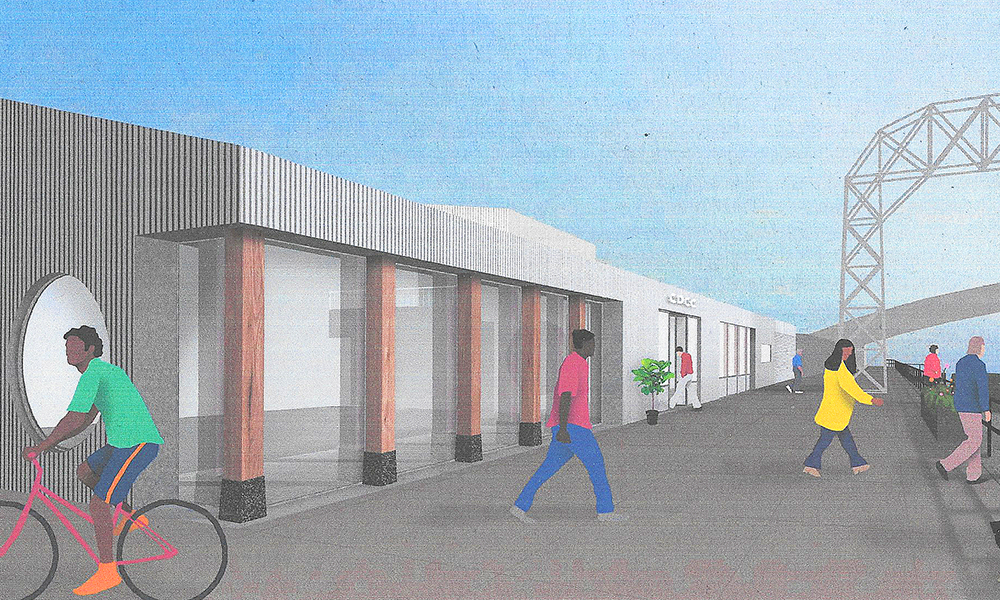Gasworks Dock Partnership CEO Simon Myers talks present and future as the scheme marches onward
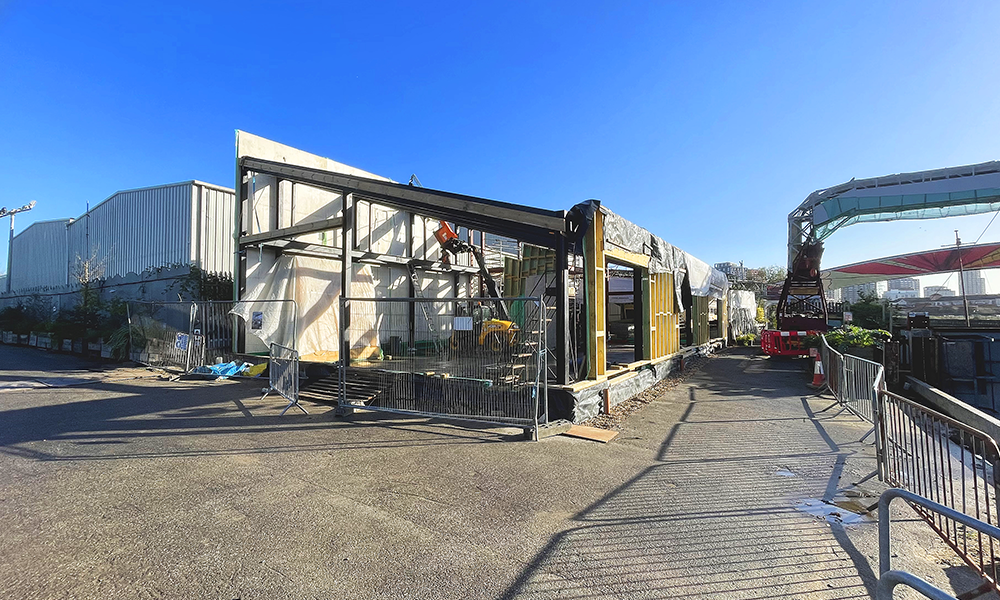
Subscribe to Wharf Life’s weekly newsletter here
As is invariably the case, a trip to Cody Dock yields an excess of optimism, promise and excitement.
What was once a rubbish tip piled high with industrial toxic waste has already become home to businesses, a plethora of wildlife, art and vegetation.
In the 14 years since Simon Myers co-founded the Gasworks Dock Partnership, an eyesore has been transformed into a community asset on the River Lea that’s tantalisingly on the threshold of the next stage in its evolution.
As CEO he’s presided over a passionate team and the efforts of countless volunteers in that time, who have all contributed to turning the wooden model of the project’s masterplan into full scale reality.
“To go alongside our rolling bridge across the dock mouth – which we installed earlier this year – we’ve finally finished our toilet and wash block,” said Simon.
“That means that after more than a decade of visitors using our very glamorous Portaloos we’ve now got proper facilities with showers, changing rooms and running water.
“What that really does for Cody Dock is to make it accessible for people to come down, especially for school visits.
“We’re probably about half way through the construction of the first phase of our visitor centre, which will include an exhibition and event space.
“The hard work is done – the foundations are in, the frame is up, the walls are being built and we’ll be doing the roof over the next couple of weeks.
“Then we can start fitting it with 100 400-watt solar panels and batteries that will give us our own electricity supply with an output that is more than the total present power consumption for the site.
“Obviously that’s only when the sun shines, but we have every intention of looking at ways of storing energy on site and – given that we have a tidal dock with a lot of water going up and down, we want to investigate how we can use that to generate electricity too.”
Like every aspect of Cody Dock, a great deal of thought has been put in to the execution of its projects and how what is created can do multiple jobs.
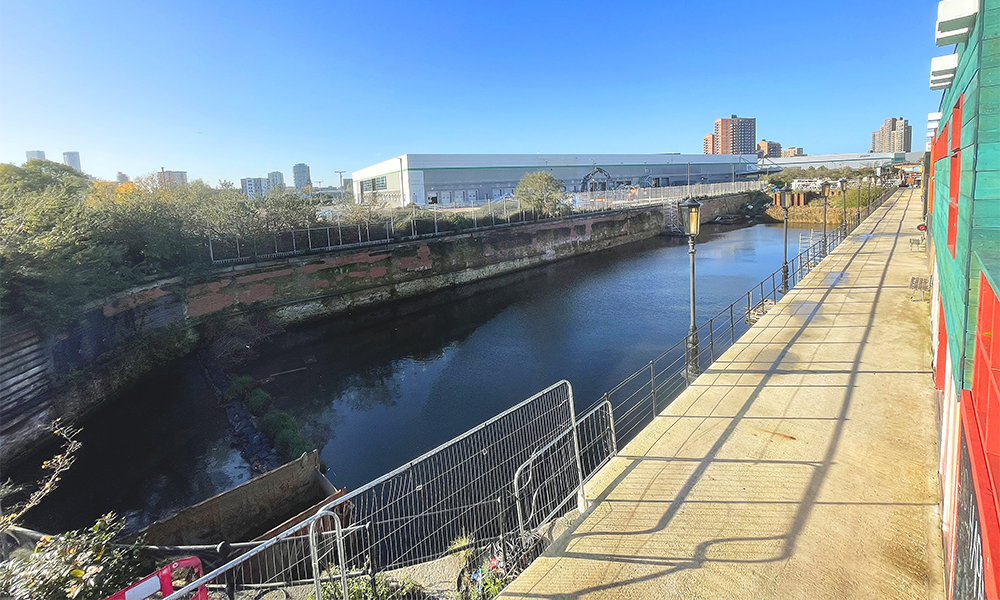
In addition to generating power, the visitor centre will become the focal point of the site.
“We have a little pop-up gallery space on site where we’ve tried lots of things and that has provided proof of concept,” said Simon.
“We also already have weekly visits from schools who come and do cross-curricular field studies in areas such as local history and river ecology
“We’ve also had an interesting arts and cultural programme at Cody Dock over the years.
“But pretty much everything has been outside – the visitor centre gives us a venue where we can put on significant exhibitions, put on shows, accommodate school visits, host music nights and film screenings.
“The first part of the venue has a foyer and a separate main area but they can be combined into one big space if required.
“It’s very much multi-functional and we’ll be equipped to host theatre performances with a fold-away stage, a green room and a proper lighting rig.
“What happens within that space will be very much a collaboration with the community and arts organisations.
“The first thing we did when we cleared the dock was host an opera on a floating stage in the middle of the water.
“These kinds of performances are very much in our DNA – we use arts as an engagement tool and this venue will enable us to do that on a scale matching the number of people who are now coming to Cody Dock on a regular basis – we’re really excited.”
Completion of the visitor centre’s first phase is expected by late spring next year to coincide with Newham Heritage Month in June.
Also in the pipeline is a new theraputic gardening, training and horticultural space that will provide a place for learning and propagation to provide all the plants for the site.
“That’s a collaboration with fifth-year architecture students from Westminster and should be complete by March,” said Simon.
“It will be a space that feels like you’re outdoors, but is actually indoors filled with plants – think Scandinavian conservatory.
“That will be opposite our rolling bridge and our plan is to finish the final landscaping of the area between the crossing and our visitor centre.
“Then we’ve got a year of planning, preparation and finalising the designs for what we have been calling until now our Heritage Pavilion.
“We actually want to run a bit of a competition and, with public consultation, to come up with a better name for it.
“It will be a new space – somewhere that celebrates the history of the waterways in this area.
“Its roof will be the keel of a fully restored Thames Ironworks lifeboat, which we already have on site at the end of the dock.
“It’s made from Honduran mahogany, is just over 100 years old and belongs to the first generation of self-righting lifeboats.
“It has an enormous iron keel and we’ll be restoring it for about a year before flipping it upside down to form the roof.
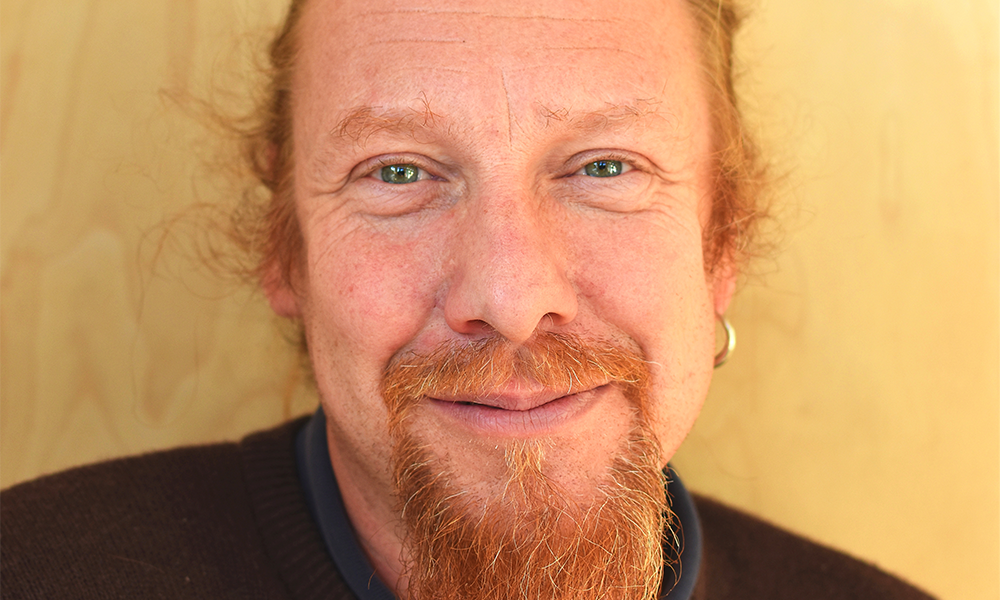
“That’s a nod to the fact that the River Lea was once the Danelaw boundary and we’re on the Viking side.
“So there are lots of things to get involved with if people would like to come down and volunteer.”
Cody Dock has also recently appointed new members of its team to look after ecology and education at the site, who will be running projects over the coming year as work continues towards the ultimate goal of re-flooding the dock.
After that happens, the site will become home to residential moorings, a berth for a heritage ship and dry dock facilities to service boats sailing up and down the Lea.
“I think we’re about 18 months away from doing that,” said Simon.
“We’ve done most of the necessary work at the end of the dock and we’re definitely over the hill with the restoration work on the dock walls.
“We can see the light at the end of the tunnel. Then it will be about connecting us up with Canning Town via that last elusive bit of footpath along the river.”
Read more: How British Land is set to build a new town centre at Canada Water
Read Wharf Life’s e-edition here
Subscribe to Wharf Life’s weekly newsletter here
- Jon Massey is co-founder and editorial director of Wharf Life and writes about a wide range of subjects in Canary Wharf, Docklands and east London - contact via jon.massey@wharf-life.com




